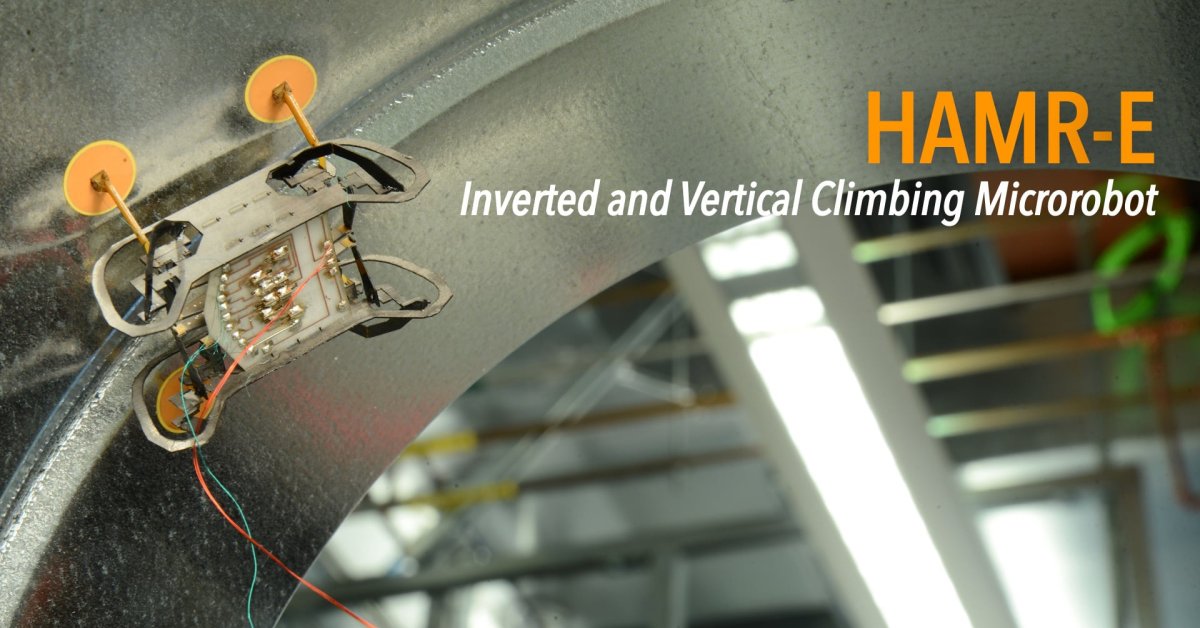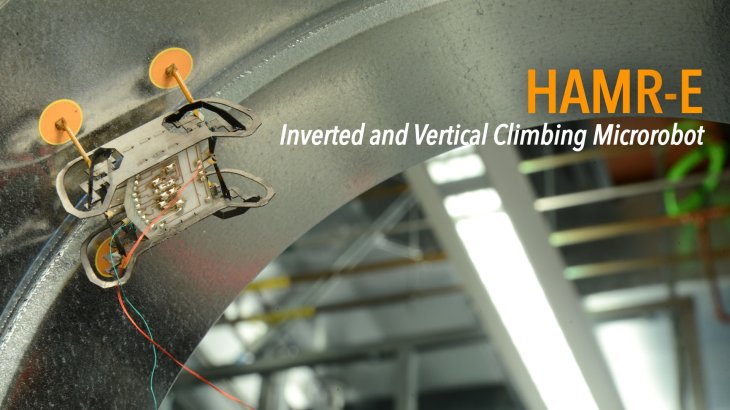Harvard Develops Tiny Robots That Can Walk Upside Down In Small Spaces
Indira Datta - Jan 01, 2019

How can this four-feet robot walk upside down and how can it be applied?
- Cafe In Tokyo With Robot Waiters Controlled By Disabled Staff
- This $333,000 Robot Kitchen Can Cook 5,000 Recipes From Scratch
- Experts Build A Robot Hand That Smells Like A Woman For Lonely Men To Hold
Scientists at Harvard have invented a robot with four electro-adhesive feet, capable of traveling in small spaces, on the walls and ceiling if the surface is electrically conductive.

HAMR-E: Inverted and Vertical Climbing Microrobot
This robot is called The Harvard Ambulatory Micro-Robot with Electroadhesion, or HAMR-E, built and developed to respond to Rolls-Royce's challenge.
Some spaces are so small that people cannot reach, so the appearance of HAMR-E is extremely handy. It can help engineers move essential items in small areas without removing everything out. Hopefully, HAMR-E can carry cameras or tools to engineers to test and fix machines that are as complex as Rolls-Royce jet engines.
According to Sebastien de Rivas, a former researcher at Harvard who now works at Apple, future robots are not only about stepping back and forth on a flat surface, but they also move in three dimensions and do many other jobs. They can help engineers reach untouchable locations that cannot be penetrated. At the same time, they help technology companies save a lot of time and money.
To be able to adhere to all conductive planes, HAMR-E's foot pads include a copper electrode insulated with polyimide. From there it creates an electrostatic force between the conductive plane and the foot. The pads can be sucked in or released through turning on and off the electric field (acting as an electromagnet), allowing the robot to walk and move around.
Its three feet will stick to the surface, and the fourth foot will step forward and then stick to the surface and so on to move. It can go forward or backward and inverted, allowing it to freely get to the destination.
The manufacturer took the idea of origami's ankle joints to create its distinctive gait with rotating legs. HAMR-E can also follow all the inner curves of jet engines. The robot is able to step more than 100 steps in a row without separation when tested both on the vertical and inverted surface.

Co-author Robert Wood PhD of a report on this project said that HAMR-E marks the first and most convincing proof fo the possibility of climbing robots with the scale of centimeters. It also proves that future robots can help us explore any kind of infrastructure including pipes, buildings, generators, engines, etc.
He added that the collaborations between academic scientists and industrial ones require the answer to questions in not only fundamental matters but also practical implementation.
Featured Stories

Features - Jul 01, 2025
What Are The Fastest Passenger Vehicles Ever Created?

Features - Jun 25, 2025
Japan Hydrogen Breakthrough: Scientists Crack the Clean Energy Code with...

ICT News - Jun 25, 2025
AI Intimidation Tactics: CEOs Turn Flawed Technology Into Employee Fear Machine

Review - Jun 25, 2025
Windows 11 Problems: Is Microsoft's "Best" OS Actually Getting Worse?

Features - Jun 22, 2025
Telegram Founder Pavel Durov Plans to Split $14 Billion Fortune Among 106 Children

ICT News - Jun 22, 2025
Neuralink Telepathy Chip Enables Quadriplegic Rob Greiner to Control Games with...

Features - Jun 21, 2025
This Over $100 Bottle Has Nothing But Fresh Air Inside

Features - Jun 18, 2025
Best Mobile VPN Apps for Gaming 2025: Complete Guide

Features - Jun 18, 2025
A Math Formula Tells Us How Long Everything Will Live

Features - Jun 16, 2025
Comments
Sort by Newest | Popular